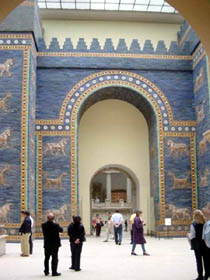
The famous Pergamon Museum is awaiting reconstruction for 351 million euros
 |
"This represents a breakthrough in the methodology of redeveloping buildings that house world cultural heritage," commented Klaus-Dieter Lehmann, chairman of the Prussian Cultural Heritage Foundation, on the reconstruction plans in front of journalists.
Among the most attractive exhibits of the museum, which was completed in 1930, are the Hellenistic Pergamon Altar from the 2nd century BC, discovered by archaeologists at today's Bergama on the Turkish Aegean coast between 1878 and 1889, and the Ishtar Gate from Babylon, dating from 604 to 652 BC. Annually, over a million people visit the building with three wings, located on the so-called Museum Island in the city center.
The renovation will add a fourth wing to the museum, and in the future, visitors will be able to enjoy an unobstructed tour that includes all exhibitions on one floor, from ancient collections to monuments of ancient Mesopotamia and Egypt. There are also plans for architectural connections with neighboring museum buildings.
The museum currently hosts ancient collections, as well as a museum of the Near East and a museum of Islamic art. Its renovation is part of the overall restoration of Museum Island in the city center, which features five buildings with exhibition and cultural collections of the metropolis. The total ambitious reconstruction of the island, which is under UNESCO protection, is not expected to exceed 1.5 billion euros, or 45 billion crowns.
The English translation is powered by AI tool. Switch to Czech to view the original text source.
0 comments
add comment










